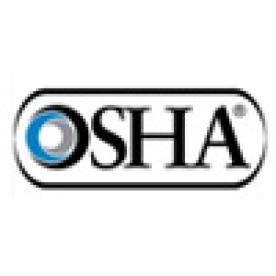OSHA has paid little attention to the health care and nursing care industries in the past. However, on June 25, 2015, everything changed. On that date, Dorothy Dougherty, Deputy Assistant Secretary of Labor for Occupational Safety and Health, announced the details of OSHA’s new health care enforcement initiative in a memorandum to OSHA Regional Administrators and State Plans. This memorandum is entitled “Inspection Guidance for Inpatient Healthcare Settings” (“Guidance Memo”).
What Does the Guidance Memo Say?
The Guidance Memo requires federal OSHA Regional Offices and State Plans to evaluate the number of work-related injuries and illnesses at inpatient health care facilities and nursing homes in their areas and target facilities with high rates of injuries and illnesses for inspections. Compliance officers are instructed to focus on five major hazards:
-
Musculoskeletal disorders (“MSDs”) relating to patient or resident handling
-
Workplace violence
-
Bloodborne pathogens
-
Tuberculosis
-
Slips, trips, and falls
OSHA also reminded compliance officers that they can and should expand the scope of an inspection when additional hazards come to their attention during an inspection. For example, additional hazards may include exposure to multi-drug resistant organisms, such as Methicillin-resistant Staphylococcus aureus (“MRSA”), and exposures to hazardous chemicals, such as sanitizers, disinfectants, anesthetic gases, and hazardous drugs.
There are no OSHA regulations applicable to several of these hazards. However, OSHA officers may rely upon the general duty clause, which enables OSHA to issue citations whenever it finds that (i) an employer has failed to provide safe work and a safe work environment for its employees, or (ii) the agency’s existing regulations are no longer sufficient to keep employees safe. In fact, the agency went so far as to include sample general duty clause citation language in the Guidance Memo that compliance officers may reference in issuing citations related to MRSA, MSDs, workplace violence, and other under-regulated hazards that they may identify in the workplace.
Who Is Covered?
It is important to understand that OSHA includes a broad range of inpatient facilities in its list of potential targets. For instance, among the facilities that OSHA designates as “hospitals” and “nursing homes” are a wide variety of workplaces, including psychiatric and substance abuse hospitals, continuing care retirement communities and assisted living facilities, hospices, skilled nursing facilities, and many others. Virtually any type of health care or nursing care facility that provides residential or inpatient services is at risk—particularly if the employer has a high rate of work-related injuries and illnesses.
More troubling still is that OSHA’s heightened scrutiny of inpatient health care facilities and nursing homes has already expanded to outpatient facilities. Due to heightened union and employee awareness about OSHA’s focus, employees from outpatient facilities are filing complaints with OSHA, and OSHA is taking them quite seriously.
Recently, for example, an employee at an ambulatory care company filed a complaint with OSHA. OSHA inspected the company, found multiple violations, and issued citations carrying penalties in excess of $200,000. This monetary penalty is noteworthy as OSHA generally does not demand penalties of this size unless a fatality took place at the facility. There were no fatalities involved with this inspection. Accordingly, all health care and nursing care employers should be prepared for the possibility of an OSHA inspection at any time and be mindful that OSHA is ready and willing to issue citations carrying heavy fines to employers in these industries.
What Steps Should Be Taken?
Employers operating inpatient health care facilities and nursing homes should be proactive and take several steps now to improve their safety and health programs and reduce the likelihood of receiving an OSHA citation.
First, conduct an internal OSHA compliance audit with the assistance of outside counsel—this audit is protected from disclosure by the attorney-client privilege. Audit reports prepared without the aid of outside counsel can be subpoenaed by OSHA and used as a guide to potential violations at a worksite. Defending an OSHA citation can cost hundreds of thousands of dollars. An audit, by comparison, costs a tiny fraction of that amount and can help you identify and resolve gaps in your safety and health programs. An added benefit of conducting an attorney-client privileged audit is the potential for a reduction in workers’ compensation claims. When employers address the gaps identified in a safety and health audit, they usually also experience an enormous drop in workers’ compensation costs.
Next, consult with counsel regarding preparation for an OSHA inspection. Many health care employers, like the ambulatory care employer discussed above, have never experienced an OSHA inspection. You need to know your rights during an OSHA inspection and those of your employees. For example, if you are selected for an inspection, you should know that your employees have a right to participate in most aspects of the inspection and are permitted to select a union representative to work with OSHA on their behalf, even if your facility is not already unionized. Employees and union organizers frequently use this right as a tool to aid in unionization efforts. Counsel can help you navigate this issue and many others that frequently arise during inspections.
Finally, be aware that consulting with counsel is particularly vital and relevant in this enforcement initiative. Many OSHA compliance officers have never inspected a health care facility or nursing home and are overburdened with heavy caseloads. It is unlikely that these compliance officers will have the time necessary to fully educate themselves about hazards and safety measures used in inpatient health care facilities or nursing homes. Making matters worse, compliance officers have been encouraged to liberally issue general duty clause citations. This combination of factors is likely to lead to a number of meritless citations—citations that may be avoided if you are well prepared.
Conclusion
Inspections of inpatient health care facilities and nursing homes have begun. Employers in the health care and nursing care industries should begin preparations for an OSHA inspection immediately in order to decrease their chances of receiving costly OSHA citations.



 />i
/>i

